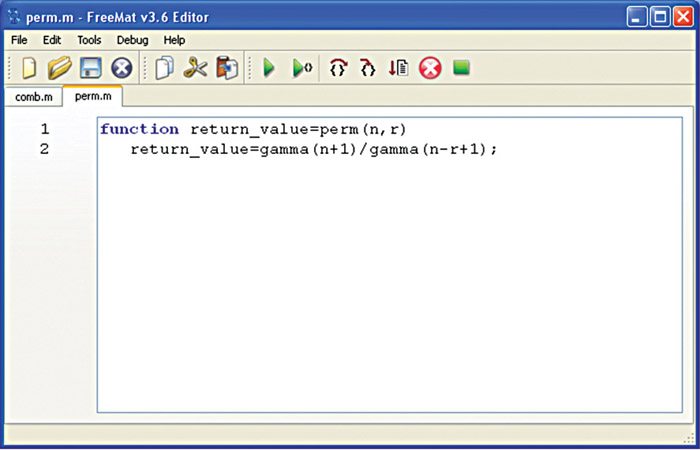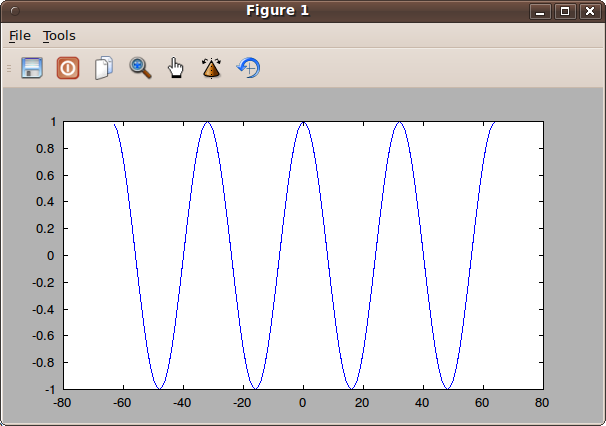

In fact, it does produce the text, but it then ThatĬan lead to some confusing behavior if you do not know what to expect.įor example, the command printf('Hello') does not appear to It is important to point out that the printf function does notĪdd a newline (or carriage return) to the output by default.


Note that this printf command is not vectorized! Each

It isĪn error if there are not enough variables to satisfy the format The values of the variablesĪ_i are substituted into the output as required. Here format is the format string, which is a string thatĬontrols the format of the output. Topic 5.9: Creating a Plot Title.47 Topic 5.10: Setting the X-Axis (Horizontal) Label.48 Topic 5.11: Setting the Y-Axis (Vertical) Label.49 Topic 5.12: Working with Multiple Figures.50 Topic 5.13: Saving Your Plots.51 Topic 5.14: Where Are My Saved Images?.52 Topic 6: Working with Arrays & Matrices.53 Topic 6.1: Creating a Sequential Array.53 Topic 6.2: Creating a Random Array.54 Topic 6.3: Viewing a Matrix Value.54 Topic 6.4: Matrix Math.55 Topic 6.4.1: Matrix Addition.55 Topic 6.4.2: Matrix Subtraction.56 Topic 6.4.3: Matrix Multiplication.57 Topic 6.4.4: Matrix Division.58 Topic 6.4.5: Element-wise Matrix Math.60 Topic 7: The Frequency Domain.63 Topic 7.1: Using the FFT.63 Topic 7.2: Windowing the Time-Domain Samples.65 Topic 7.3: Adjusting the Values of the FFT.66 Topic 7.4: Calculating the Inverse FFT.67 Topic 7.5: Setting the Frequency Units for the FFT Display.68 Topic 8: Scripts & Functions.73 Topic 8.1: The Freemat Editor.73 Topic 8.2: Creating a Script.74 Topic 8.3: Running a Script.79 Topic 8.4: Creating a Function.80 Topic 9: Flow Control.82 Topic 9.1: For Loops.82 Topic 9.2: Comparison / Equality Operators.PRINTF Formated Output Function (C-Style) 21 Topic 3.3: Using a Fixed Width Font in the Freemat Editor.22 Topic 4: Working with WAV Files.23 Topic 4.1: Reading a WAV File Size.23 Topic 4.2: Reading a WAV File.23 Topic 4.3: Reading the Sample Rate and Bit Depth.26 Topic 4.4: Reading Only a Portion of a WAV File.28 Topic 4.5: Writing a WAV File.30 Topic 5: Plots.33 Topic 5.1: Plot of a One-Dimensional Array.33 Topic 5.2: Setting the Plot Color.34 Topic 5.3: Setting the Line Type.35 Topic 5.4: Point Markers.36 Topic 5.5: Making an X-Y Plot.39 Topic 5.6: Plots of Multiple, Independent Variables.41 Topic 5.7: Setting Horizontal and Vertical Limits.43 Topic 5.8: Resizing a Plot.45 The Freemat Primer of 85 4 Topic 1: Working with Freemat.5 Topic 1.1: The Main Screen - Ver 3.6.5 Topic 1.1.1: The History Window.6 Topic 1.1.2: The Files Window.7 Topic 1.1.3: The Workspace Window.7 Topic 1.2: The Command Window.8 Topic 1.3: Seeing the Results (or Not).8 Topic 1.4: How Many Decimal Points Do You Want?.9 Topic 1.5: Understanding Variables.10 Topic 1.6: Variable Types.10 Topic 1.7: The Variable "Ans".11 Topic 1.8: Built-In Variables.11 Topic 1.9: Using Built-In Functions.12 Topic 2: Working with Math.14 Topic 2.1: Basic Math Operations.14 Topic 2.2: Precedence.14 Topic 2.3: Cumulative Sum, Products and Factorials.15 Topic 2.4: Exponentials and Logarithms.16 Topic 3: Setting Up the Freemat Environment.19 Topic 3.1: Setting the Working Directory for Saving Files.19 Topic 3.2: Setting the Path for Retrieving Data Files. Table of Contents About the Author.4 User Assumptions.4 How I Put this Book Together.4 Licensing.4 Using with Freemat v3.6 Documentation.


 0 kommentar(er)
0 kommentar(er)
